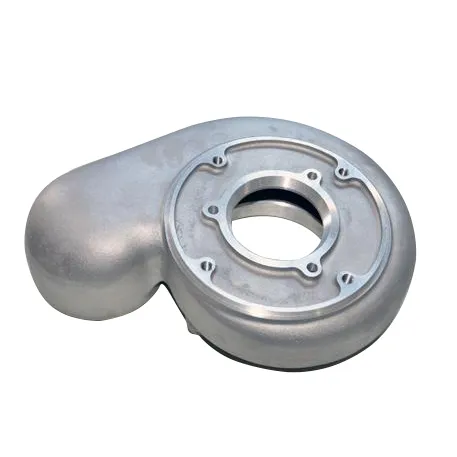Mobile:+86-311-808-126-83
Email:info@ydcastings.com
Efficiency and Innovation in Water-Cooled Turbine Housing Design for Enhanced Performance and Reliability
Water-Cooled Turbine Housing Enhancing Efficiency and Longevity
The integration of advanced cooling technologies in turbine design has been a paramount area of research and development in the pursuit of greater efficiency and longevity in power generation systems. One innovative solution that has gained traction in recent years is the water-cooled turbine housing. This technology leverages the cooling properties of water to maintain optimal operating temperatures, thereby enhancing the overall performance of turbines used in various applications, from power plants to aviation.
The Need for Cooling in Turbine Systems
Turbines operate under extreme conditions, with high temperatures and pressures that can significantly affect their performance and lifespan. As the fuel combustion process generates heat, the materials used in the turbine housing can experience thermal stress, leading to potential failures and reduced efficiency. Effective cooling solutions are essential for mitigating these challenges. Traditional cooling methods, such as air cooling, have their limitations, particularly in high-performance scenarios where efficiency is critical.
Advantages of Water Cooling
Water-cooled turbine housings offer several advantages over traditional cooling methods. First, water has a high specific heat capacity, meaning it can absorb and dissipate heat more effectively than air. This property enables water-cooled systems to maintain lower and more uniform temperatures throughout the turbine housing, reducing thermal gradients that can lead to material fatigue and failure.
Moreover, water cooling systems can be designed to efficiently utilize existing water resources, potentially reducing operational costs. By recycling water in a closed-loop system, the overall environmental impact can also be minimized, making water-cooled turbine housing a more sustainable option for power generation.
water cooled turbine housing

Design Considerations
The design of a water-cooled turbine housing must carefully consider several factors, including flow rates, temperature differentials, and material selection. Engineers must ensure that the water flow is optimized to provide uniform cooling across the entire turbine housing. Computational fluid dynamics (CFD) simulations are often employed during the design phase to predict how heat will disperse through the housing, allowing for adjustments before actual implementation.
Material selection is equally critical. The housing must be constructed from materials that can withstand not only high temperatures and pressures but also the corrosive nature of water over time. Advanced alloys and coatings are frequently utilized to enhance durability and prevent degradation from constant exposure to moisture.
Future Directions
As technology advances, the integration of water-cooled turbine housing systems is expected to evolve further. Innovations in materials science could lead to lighter and more resistant components, enhancing the overall efficiency of turbine designs. Additionally, the advent of smart sensors and monitoring systems may enable real-time assessments of thermal conditions, allowing for adaptive cooling strategies that optimize performance based on varying operational demands.
With the increasing demand for clean and efficient energy production, water-cooled turbine housing presents a promising solution. Its ability to enhance thermal management can significantly contribute to the longevity and reliability of turbine systems, making it an essential consideration for modern power generation. As industries worldwide strive toward sustainability, the adoption of advanced cooling technologies like water-cooled turbine housings may play a crucial role in achieving those goals.
In conclusion, water-cooled turbine housing is on the forefront of innovation in turbine technology, providing substantial benefits in efficiency, durability, and environmental stewardship. By harnessing the cooling properties of water, we can look forward to a future where turbine performance is optimized, leading to cleaner, more reliable energy solutions for generations to come.
-
Why Should You Invest in Superior Pump Castings for Your Equipment?NewsJun.09,2025
-
Unlock Performance Potential with Stainless Impellers and Aluminum End CapsNewsJun.09,2025
-
Revolutionize Your Machinery with Superior Cast Iron and Aluminum ComponentsNewsJun.09,2025
-
Revolutionize Fluid Dynamics with Premium Pump ComponentsNewsJun.09,2025
-
Optimizing Industrial Systems with Essential Valve ComponentsNewsJun.09,2025
-
Elevate Grid Efficiency with High-Precision Power CastingsNewsJun.09,2025











